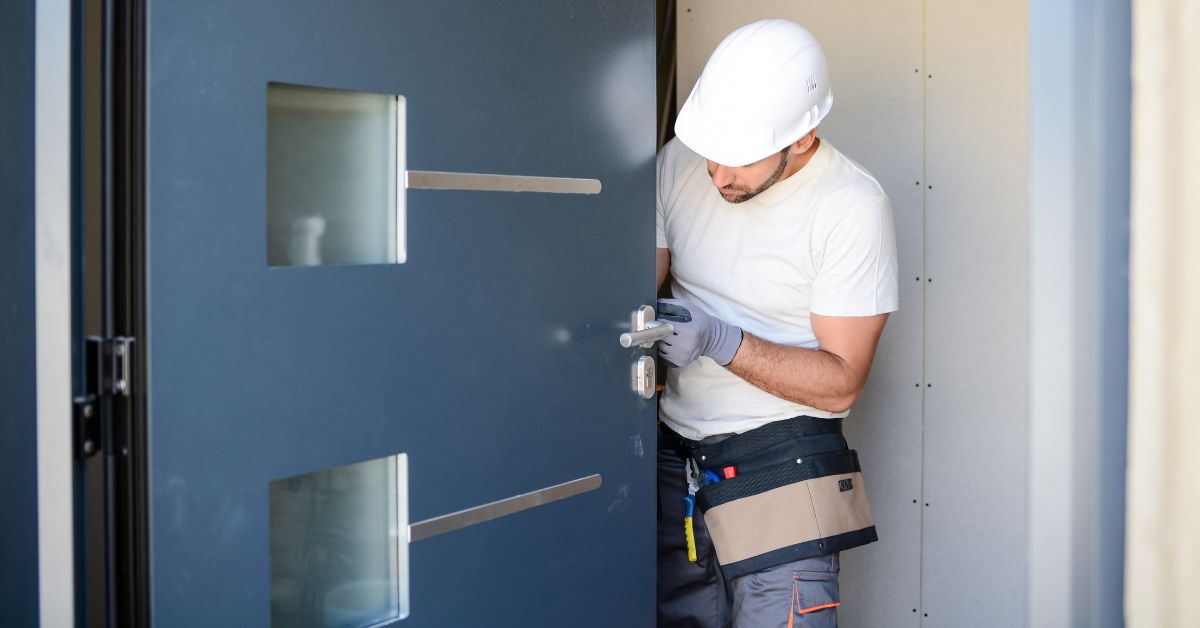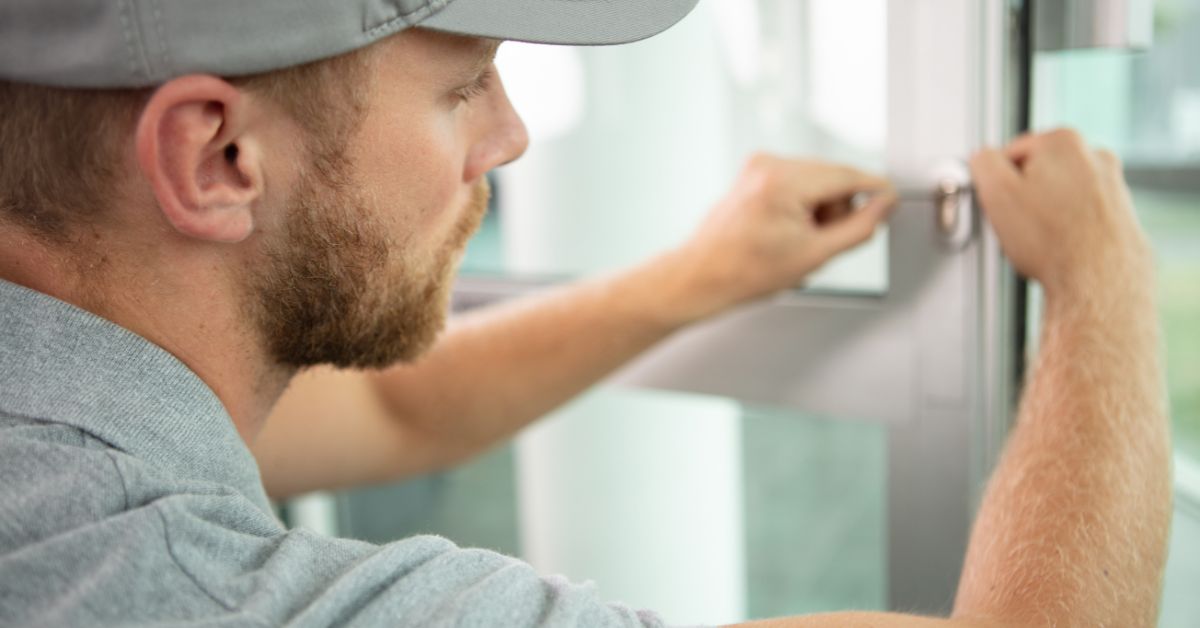9 Mistakes To Avoid When Installing a Commercial Door

Commercial door installation might seem straightforward, but even minor errors can lead to costly repairs, functionality issues, or safety hazards. To ensure a smooth installation process and a durable result, you must be aware of potential pitfalls. From choosing the right materials to installing the hardware correctly, every step of the process matters.
If you’re preparing for installation, use this guide to explore nine mistakes to avoid when installing a commercial door. After reading, you’ll have the tools you need to ensure your doors stand the test of time.
Skipping Accurate Measurements
Any miscalculation, even by a fraction of an inch, can result in an ill-fitting door. This could lead to gaps, drafts, operational issues, or even the need to reorder an entirely new door.
To avoid this, always measure the door frame’s heigh, width, and depth twice to confirm accuracy. It’s also vital to ensure that the door has sufficient clearance to swing freely without scraping the floor or surrounding frame. During your measurements, include space for hinges, handles, and other hardware.
If you’re working on a retrofit project, be especially cautious. An existing door frame might not be perfectly square, so you should account for irregularities.
Choosing the Wrong Door Type
Commercial doors come in a variety of shapes and sizes, and choosing the wrong type can cause long-term issues.
Some common options include these:
- Hollow metal doors: Popular in warehouses or industrial spaces, these work best for environments requiring durability and security.
- Glass doors: These doors are ideal for offices or retail spaces, though they do require extra care due to their fragility.
- Wooden doors: Though they may not withstand heavy-duty use in high-traffic areas, wooden doors are aesthetically pleasing.
Each material has unique advantages and limitations, so consider factors like traffic load, security needs, weather exposure, and aesthetic preferences when selecting your door. If you choose the wrong material, your door may not meet your operational requirements and incur frequent wear and tear.

Ignoring Building Codes and Regulations
Local laws often dictate the types of doors, fire ratings, and accessibility features required for commercial properties. Commercial doors often need to meet specific fire resistance standards, so verify fire rating requirements for your building.
Check the Americans with Disabilities Act (ADA) accessibility guidelines, including door width, handle types, and the amount of force required to open the door. In addition, consult local building codes to confirm that your materials and installation meet all safety and legal requirements.
Ignoring these regulations can result in penalties, delays, or the need for costly modifications after installation.
Improperly Installing Door Hinges
You might be surprised how many installation issues stem from door hinges. If you install door hinge hardware improperly, your doors may sag, drag, or fail to close altogether.
To prevent these issues, avoid these common mistakes:
- Incorrect placement: If you don’t place the hinges at the correct height or distance, the door’s alignment will be off. Often, this leads to significant operational problems.
- Using weak screws: Thin or undersized screws are more likely to loosen over time, causing the door to shift out of alignment. Use heavy-duty screws that are long enough to secure the hinge into the doorframe.
- Neglecting maintenance post-installation: Once installed, hinges require periodic adjustments. Failing to lubricate or tighten them as needed can shorten the lifespan of your door hardware.
Double-check hardware placement during installation, and fasten everything securely.
Overlooking Door Frame Preparation
A poorly prepared door frame is another mistake that can undermine your installation. Many problems arise because the frame isn’t square, plumb, or securely anchored.
Before installing your door, use a level to ensure the frame is perfectly square, and remove any debris or uneven surfaces that may prevent the frame from sitting flush against the wall. Particularly for doors in high-traffic or industrial areas, secure the frame with adequate fasteners and reinforcements. Remember, even the best door won’t perform well if the frame is improperly installed.
Using the Wrong Tools and Materials
The tools and materials you choose play a critical role in the quality of your final installation. One common issue is using standard tools instead of commercial-grade. For example, a lightweight residential drill might not be sufficient to handle thicker materials.
Opting for low-quality fasteners is another risky mistake. Cheap screws, anchors, or adhesives may fail under the weight and stress of a heavy commercial door. Commercial doors often come with kits designed for their specific installation requirements. Skipping these specialized installation kits can lead to improper assembly.
Always ensure you have the right tools on hand, including commercial-grade drills, levels, and fasteners. Cutting corners here often leads to higher costs down the line.
Failing To Check Alignment Before Finalizing
Once installed, always check the alignment of your commercial door before considering the job finished. Misaligned doors are inconvenient, and they can compromise security and efficiency.
Signs of misalignment include difficulty in opening or closing the door smoothly, visible gaps between the door and frame, and uneven wear on the door’s edges. These issues can indicate the need for adjustments to ensure proper functionality and security.
To address these issues, use a level to verify that the door and frame are straight, and adjust the hinges, if necessary, to bring the door back into alignment. Once the door is aligned, ensure the locking mechanism operates smoothly.
Overlooking Post-Installation Maintenance
Once the door is installed, many people assume the job is done. However, commercial doors require regular maintenance to function properly over the long haul. Neglecting post-installation care is a common mistake that leads to premature wear and tear.
To maintain your doors after installation, regularly inspect and lubricate the moving parts, such as hinges and locking mechanisms. If the door is exposed to the elements, always keep it clean. Additionally, if the door begins to stick or sag, adjust the alignment immediately. This simple maintenance routine can significantly extend the life of your commercial door and protect your investment.

Rushing the Installation Process
Rushing through installation is one of the most common and damaging mistakes you can make. Timelines are important, but speed should never come at the expense of quality. Rushing increases the likelihood of overlooking important steps, using the wrong tools or hardware, and making errors that require costly repairs or reinstallation.
Take your time to follow every step of the installation process methodically. Carefully preparing your materials, checking your work, and prioritizing quality will ultimately save you time, money, and frustration.
Install With Confidence
Installing a commercial door is no small task, but you can ensure a smoother process and more reliable results if you avoid these nine common mistakes. From measuring accurately to preparing the frame and properly installing hinges, attention to detail is key.
If you’re ready to install commercial doors, head over to Door Hub to discover the tools you need for a flawless installation. Remember, investing time and effort will pay off with a door that performs efficiently for years to come.

Author
Michael Rega
Chief Marketing Officer and founding Member of DoorHub.com